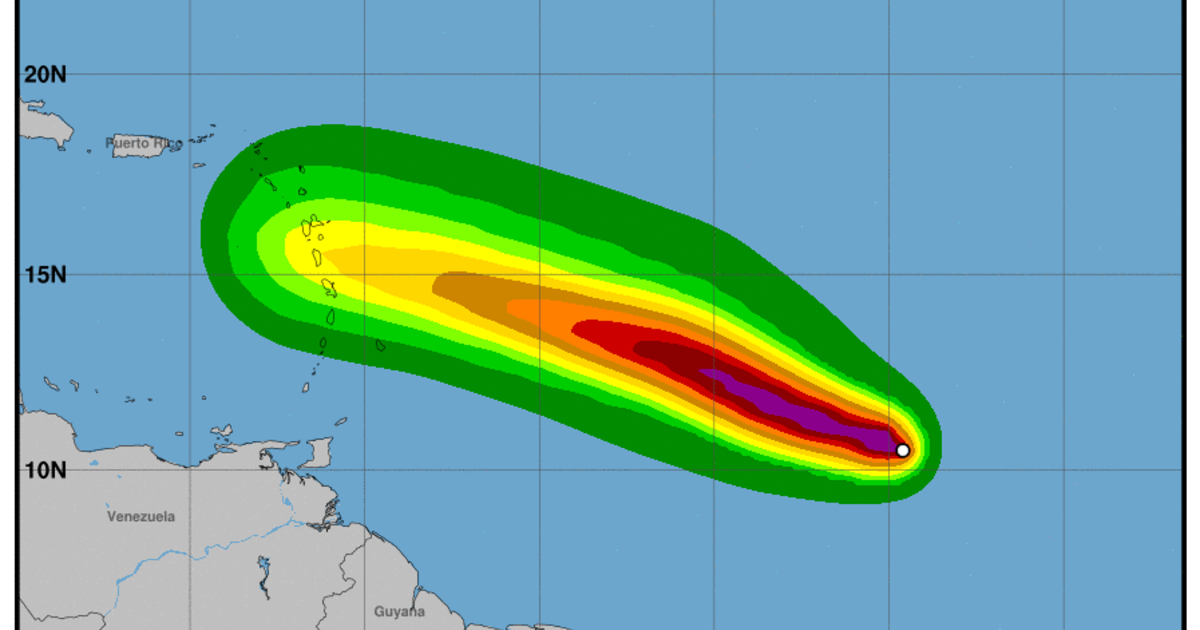Projected Path Analysis
Beryl projected path – The projected path for Hurricane Beryl is a crucial element in understanding its potential impact and preparing for its arrival. This path provides valuable information about the storm’s movement, direction, and estimated time of arrival (ETA), allowing coastal communities and emergency responders to take necessary precautions.
Current Location and Direction
As of [date and time], Hurricane Beryl is located near [location] and is moving in a [direction] direction. The storm’s current speed is [speed] miles per hour (mph), and it is expected to maintain or slightly increase its forward speed over the next few days.
Estimated Time of Arrival
According to the latest projections, Hurricane Beryl is expected to make landfall near [location] on [date] at approximately [time]. However, it is important to note that the ETA may change as the storm progresses, influenced by various factors.
Beryl’s projected path has been updated. For the latest information, check the path of hurricane beryl. This interactive map provides real-time updates on the storm’s track and intensity. Stay informed and be prepared.
Factors Influencing Accuracy
The accuracy of the projected path is influenced by several factors, including:
- Atmospheric Conditions: Changes in wind patterns, temperature, and pressure can alter the storm’s track and speed.
- Ocean Currents: Ocean currents can push or pull the storm, affecting its direction and speed.
- Land Interaction: When a hurricane makes landfall, it interacts with the terrain, which can slow it down or change its direction.
Due to these factors, it is essential to monitor the projected path regularly and stay informed about any updates or changes.
Beryl’s projected path is a bit uncertain, but the spaghetti models are starting to converge. This means that we should have a better idea of where Beryl is headed in the next few days. Beryl is expected to weaken as it moves inland, but it could still bring heavy rain and flooding to some areas.
Impact Assessment

The projected path of Hurricane Beryl has the potential to impact various areas, resulting in a range of consequences. These impacts include flooding, wind damage, and storm surge, each posing significant risks to affected regions.
Areas at Risk, Beryl projected path
The areas that may be affected by Beryl’s projected path include:
- Coastal communities in the southeastern United States
- Inland areas within the projected path of the storm
- Offshore oil and gas platforms and infrastructure
Potential Impacts
The potential impacts of Hurricane Beryl include:
- Flooding: Heavy rainfall and storm surge can cause widespread flooding, damaging homes, businesses, and infrastructure.
- Wind damage: High winds can cause significant damage to buildings, trees, and power lines.
- Storm surge: A wall of water that can reach several feet in height, storm surge can cause severe flooding and damage to coastal areas.
Likelihood of Occurrence
The likelihood of occurrence for each potential impact is difficult to predict with certainty. However, based on historical data and current weather conditions, the following table provides an estimate of the likelihood of each impact:
| Impact | Likelihood of Occurrence |
|---|---|
| Flooding | High |
| Wind damage | Moderate to high |
| Storm surge | Moderate |
Preparedness and Response: Beryl Projected Path

Individuals and communities in the projected path of Beryl should take immediate action to prepare and respond to the storm.
It is crucial to follow instructions from local authorities and emergency responders. Stay informed about the storm’s progress and make necessary preparations to ensure safety.
Recommended Actions for Individuals and Communities
- Secure loose objects outside homes and businesses.
- Bring in outdoor furniture and grills.
- Fill up vehicle gas tanks.
- Stock up on non-perishable food, water, and medications.
- Prepare an emergency kit with essential supplies.
- Identify evacuation routes and plan to evacuate if necessary.
- Stay informed about the storm’s progress through local news and weather updates.
Evacuation Zones and Procedures
| Zone | Evacuation Procedures |
|---|---|
| Zone A | Mandatory evacuation. Residents should leave immediately. |
| Zone B | Voluntary evacuation. Residents should consider leaving if they live in low-lying areas or near the coast. |
| Zone C | No evacuation recommended at this time. Residents should monitor the storm’s progress and be prepared to evacuate if necessary. |
Emergency Contact Information:
- 911 (for emergencies)
- Local law enforcement (for non-emergencies)
- National Weather Service (for weather updates)